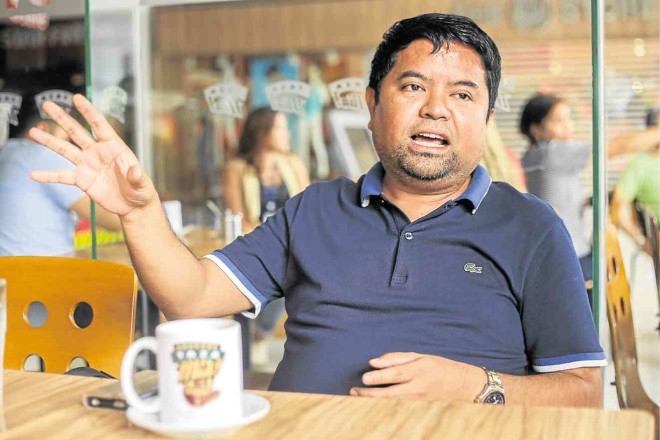
It’s a pleasure to revisit Lipa, Batangas. Two years ago we first toured the city and its environs. Now we were surprised at how much has changed in such a short time. Even SM City Mall in Lipa has undergone a series of expansions and renovations to cope with the demands of the Lipeño consumer.
“Batangas is experiencing an economic boom,” said Lipa businessman TJ Fabie. “People here are spending more money on finer things. They want better service, and more variety with regards to food, clothing and other luxury items.”
Fabie hosted us in his new boutique hotel, Hotel 1925, in Lipa City.
Hotel 1925 is upscale, and has shops that cater to more refined pleasures like a barbershop that serves whisky, and a store for bicycle hobbyists.
The hotel has a Spanish colonial interior design. The hallways and rooms feature machuca tile floorings, that iconic tiling ubiquitous in old houses and churches. Antique 1920s aparador and comoda in all the rooms serve as functional features.
Two years ago, we had the chance to have dinner at Fabie’s Italian restaurant in Lipa, Casa Marikit. His family’s love for Italian food spilled over to the Italian restaurant in Hotel 1925’s first floor, D’Ursi Autentica Pizzeria Napoletana.
A brainchild of Italian chef Matteo D’Ursi, the restaurant serves thin-crust pizza baked in a wood-fire oven. The pastas are al dente, and the pizzas served Neapolitan style.
We proceeded to explore Batangas. First stop was SM Lipa, where we had coffee at Taza Mia Coffee. The shop is the result of the passion for coffee of Taza Mia CEO Rodel Lacorte, who told us how Lipa was once at the top of the global supply chain for coffee. “During the 19th century, Lipa was the third largest supplier of coffee in the world. It’s a shame that today, our coffee production is just a fraction of what it was. We want to change that,” says Lacorte.
After Taza Mia, we went to a unique shop selling organic pomade in a variety of scents, Man Pomade and Gears. Proprietor Bryan Baylosis explained how men nowadays are vanidoso, and want to look their best including their hair.
The shop also sells the “balicomb,” a portmanteau of the words balisong and comb, which features the standard fan-knife design of the pocket knife, but with a comb. Talk about the gentrification of the legendary Batangueño weapon.
Also in SM Lipa, one can find Allegra’s Kitchen, with its selection of burgers, soups, salads, pastas and grilled meats. Owner Dr. Gerry Malvar Castillo had always wanted to set up a restaurant where he could serve his culinary creations. Must-try dishes include their Baby Back Ribs and Grilled Black Angus Rib eye Steak.
We proceeded to the Beehive Farm and Kitchen for lunch. Located in Lipa City, the farm and restaurant are owned by Joel Katigbak. Started in 2008, the restaurant serves food made with the honey farmed from the beehives in the property. The business also teaches local farmers how to set up their own bee farm.
Cecil de Jesus, general manager of Lipa Beekeepers Marketing Cooperative, noted that Batangueño farmers who set up beehives in their farms yield 20 to 40 percent more crops.
Taal Lake and the beaches of San Juan
We ventured farther into Batangas, among the beautiful beaches in the municipality of San Juan. We stayed in the picturesque Klub Keluarga, where the beach is clean and beautiful, and offers an astonishing view of sunrise in Batangas.
After staying in Klub Keluarga, we explored nearby La Luz Beach Resort and Spa. The resort offers hundreds of lovely views, perfect for weddings.
To cap our visit, we went to Lima Park Hotel for traditional Batangueño dishes like bulalo and deep-fried tawilis. The hotel also offers a boat tour around Taal Lake on “Lady of the Lake,” a 30-foot catamaran cruiser.
The boat took us to the Bird Sanctuary in Taal and to the now famous Lava Walk, where tourists can see the black volcanic rocks from Taal—a perfect end to our tour of Batangas. —CONTRIBUTED